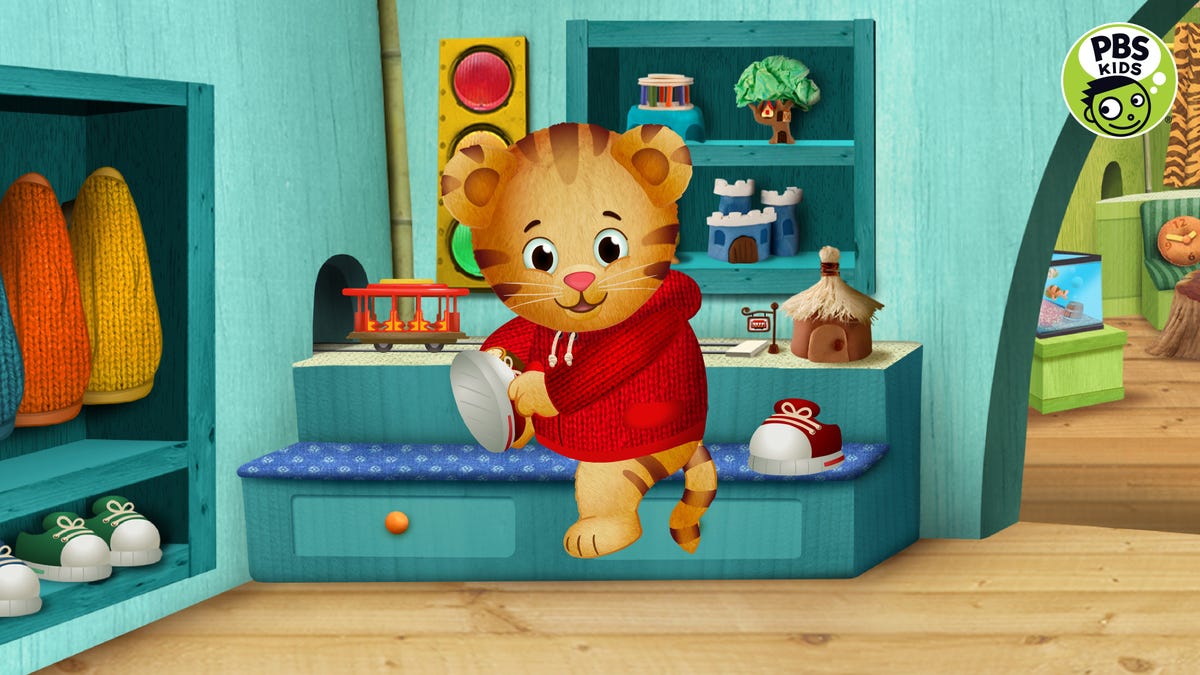PBS Kids, with a new channel, turns to tech old and new
For a free, 24/7 kids' channel, PBS experiments with cutting-edge interactivity, but it also relies on a TV tech as retro as it gets: broadcast airwaves.

"Daniel Tiger's Neighborhood" and other PBS Kids favorites are getting their own network, a 24/7 free channel broadcast over the air and live-streamed online.
For one of its biggest channel launches in years, PBS realized that a crucial technology to complete its mission was one that's existed since the dawn of TV: over-the-air signals.
On Monday, the public television programmer fired up PBS Kids, a free channel of 24/7 educational children's programming. It has familiar shows like "Sesame Street" and "Daniel Tiger's Neighborhood," as well as new programming like Friday family nights with movie premieres.
As befits the era of Netflix and Facebook Live, PBS will deliver the channel via online live stream, with plans for cutting-edge interactive teaching games and a library of videos on demand. But it will also offer PBS Kids as a new over-the-air channel that almost anyone in the US can access with just a TV and antenna.
"Our goal is to reach all children," said Lesli Rotenberg, PBS' general manager of children's media. "We have a special emphasis on reaching those kids who need that help most: at risk, low-income, however you want to frame it."
Over-the-air broadcasting -- the oldest TV technology there is -- is enjoying a resurgence, a low-tech side effect of the popularity of digital video options. As Netflix and other online alternatives spur more people to shun pay-TV like cable and satellite, more of these cord-cutters are tuning into live TV with an antenna, just as everyone did in the time of "I Love Lucy" and Ed Sullivan.
About 17 percent of US television households get their TV solely from over-the-air broadcasts, according to a study by research firm GfK in July, up from 15 percent a year earlier. And "broadcast-only" households are more likely to be earning less than $30,000 per year, at 26 percent.
Many of those kids, PBS found, rely on over-the-air TV. They're also PBS Kids' most loyal fans.
In its research, the programmer found that kids 2 to 8 years old in over-the-air-only homes watch about three times as much PBS as an average kid does. "They make up the biggest percentage of our audience," Rotenberg said.
In with the new
Still, PBS wants to push the tech envelope too, she said.
Later this year, the live stream will introduce integrated games, letting children toggle between a PBS Kids live show and an activity that dives deeper into the subject from a particular segment. Research showed that kids learn more if they interact with both video and games.
The channel will also be available as a live stream on pbskids.org and on the free PBS Kids Video App for mobile devices and tablets. The live stream is expected to come to TV-streaming devices like Roku, Apple TV and Chromecast within the first year.
PBS Kids will continue to offer paid online subscriptions, like its Amazon add-on membership for $5 a month. That paid option will have a wider library of on-demand videos, but the free service will also have clips on demand plus the always-on live feed.
Of PBS' roughly 350 member stations, 108 are expected to launch the PBS Kids channel on TV, making it available to 90 percent of the US. Seventy-five stations debuted the channel Monday. Viewers can check local station schedules for details.
Live PBS Kids programming will also be available for free nationwide during prime-time evening hours and on weekends for the first time. Though many PBS member stations include a block of kids' programming sometime during the day, kids watch twice as much TV in the evening, PBS found.
First published, Jan. 15, 9:45 a.m. PT.
Update, Jan. 17 at 8:15 a.m. PT: Added the number of stations launching the channel and a confirmation of its debut.
Tech Enabled: CNET chronicles tech's role in providing new kinds of accessibility. Check it out here.
Batteries Not Included: The CNET team shares experiences that remind us why tech stuff is cool. Take a look here.

